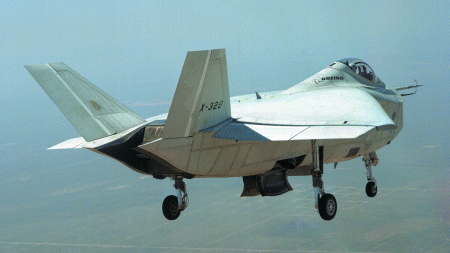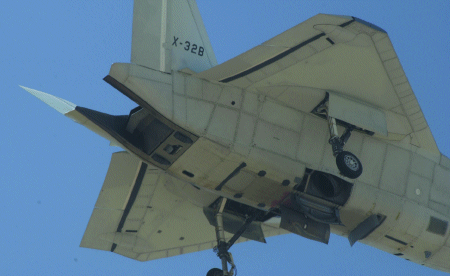Boeing has completed critical testing of the X-32B Joint Strike Fighter (JSF) transitioning between conventional and short take-off and vertical landing (STOVL) modes. This clears the way for the aircraft to move to the Patuxent River naval test facility for the final hover and vertical landing portion of flight testing.


The X-32B has completed the full envelope of STOVL mode testing planned for Edwards AFB, California. This included transitions at engine idle and full military power, flying in STOVL mode at airspeeds from 205kt (380km/h) to 140kt and at altitudes between 6,000-10,000ft (1,800m to 3,000m).
This entailed closing fully the convergent/divergent aft nozzle and diverting thrust through the X-32’s two vertical lift system butterfly nozzles, vectored downwards by 45°, as well as exhausting gas through the aircraft’s six roll and pitch control nozzles and the hot gas diverter screen.
“Transition was as simple as pushing a button on the throttle control. The aircraft was easier to control than the [BAE/Boeing] Harrier using a thumb wheel on the stick,” says UK Royal Navy test pilot Lt Cdr Paul Stone, who completed the fifth and sixth flights.
Boeing will conclude flight testing with a full hover and vertical landing around the same time as Lockheed Martin is planning to start STOVL flight testing of its X-35B demonstrator. This is scheduled for mid-June with initial hover tests over a pit starting from the opposite end of the STOVL flight test envelope to the X-32.
Recently completed static testing confirms that the X-35’s shaft-driven lift fan produces abundant vertical lift, lower exhaust temperature and has a more acceptable ground environment than direct lift employed by X-32B, claims Lockheed Martin.
Source: Flight International


























